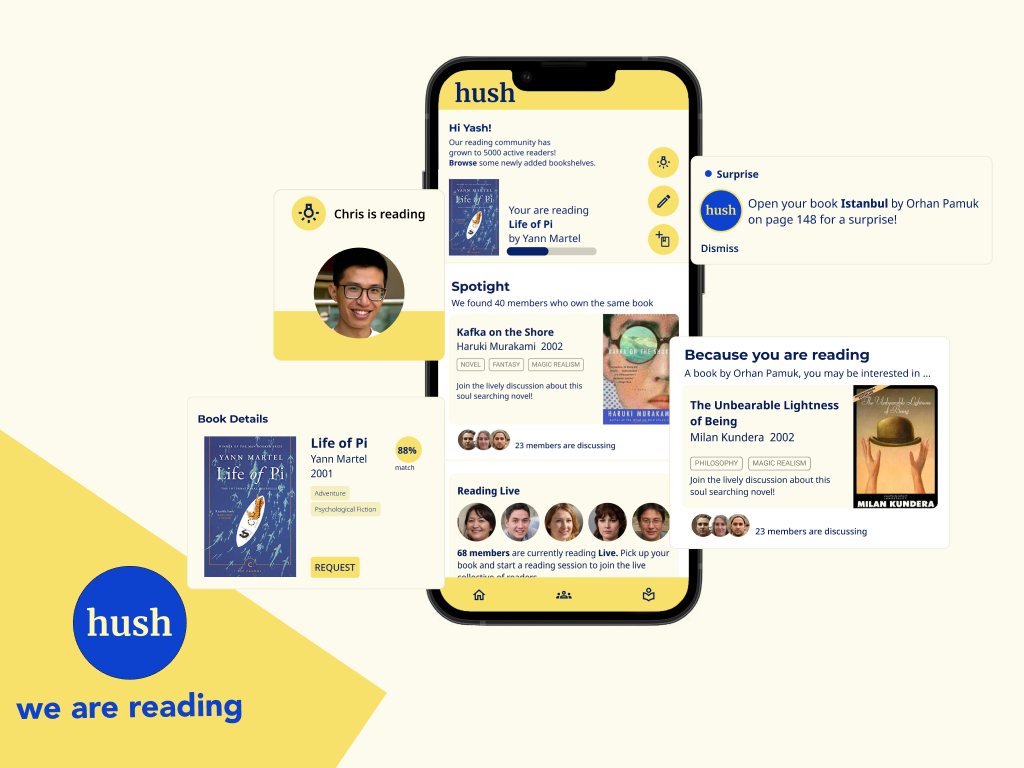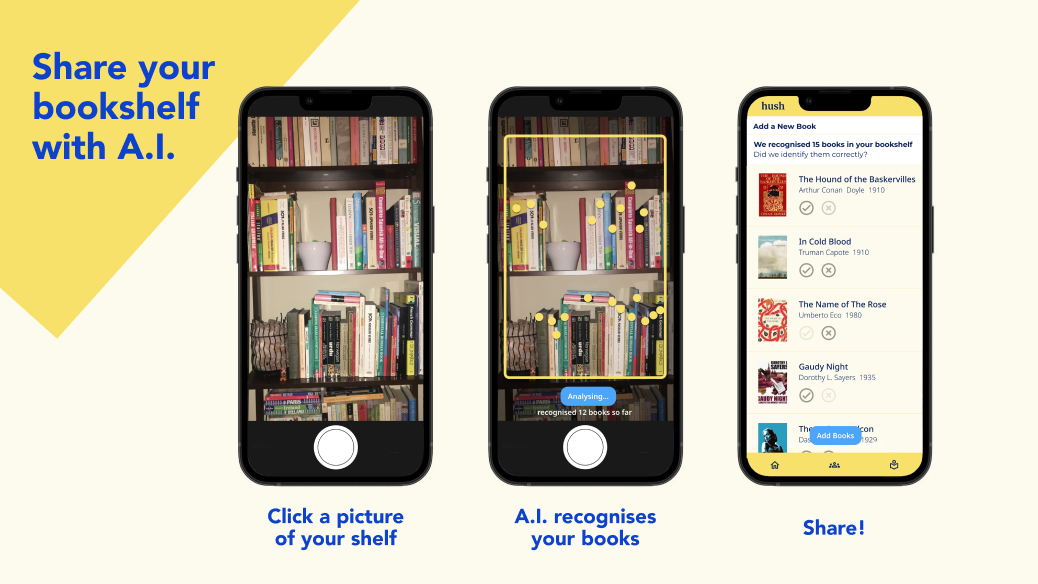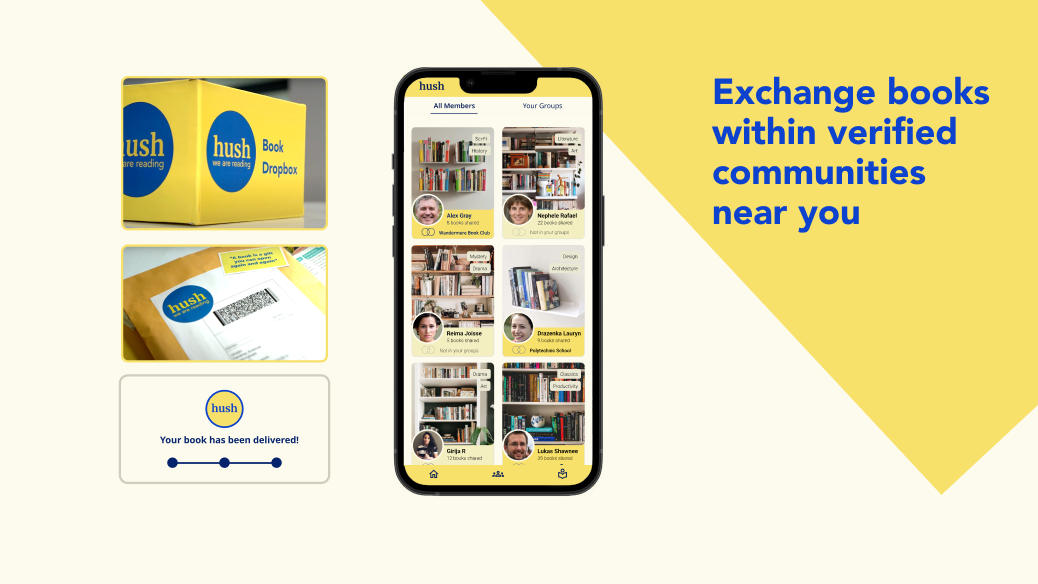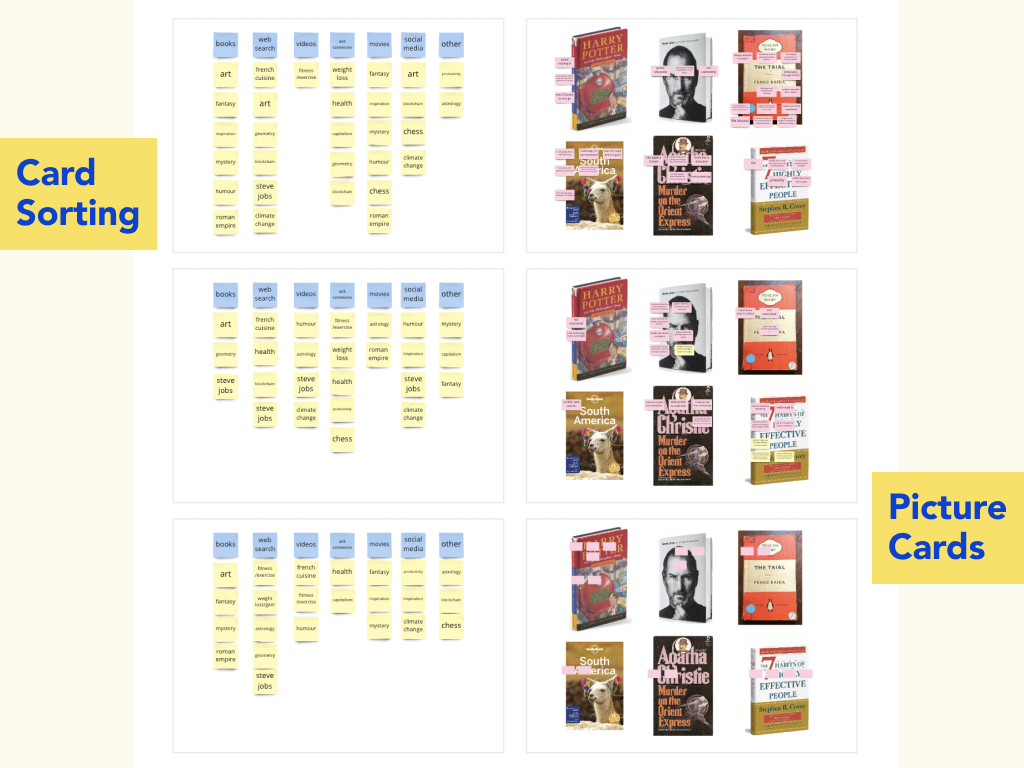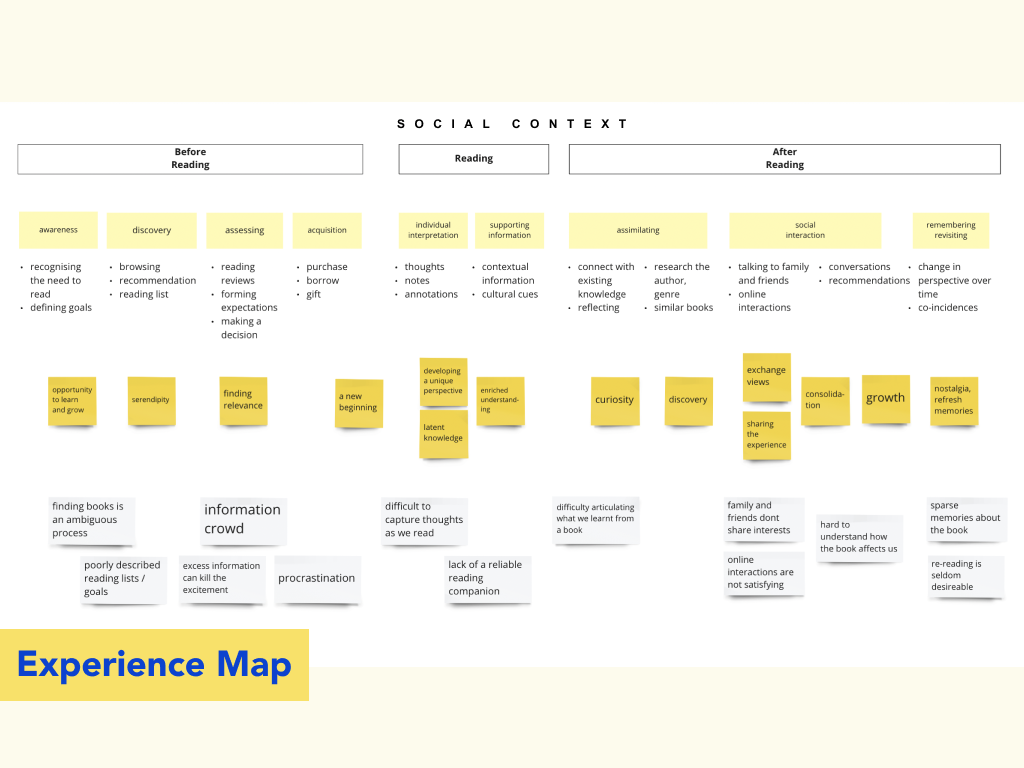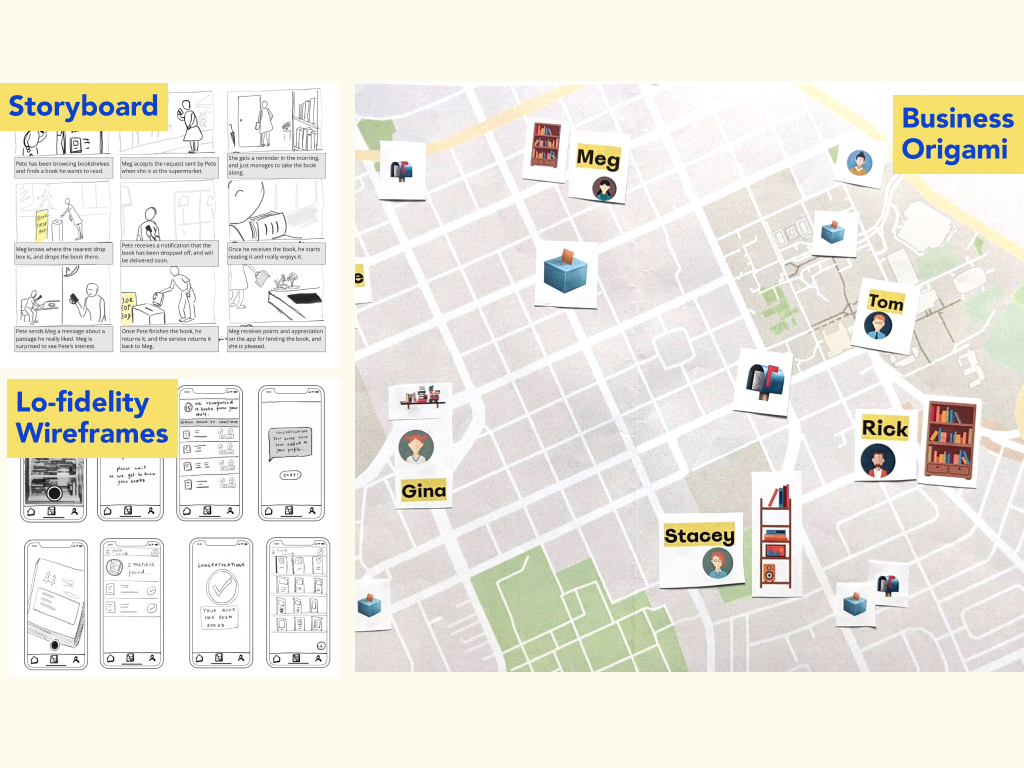I am a Human Centred Designer with prior expertise in narrative storytelling and software engineering. I enjoy interacting with Users using Co-design techniques to understand and unravel their unique needs.
Major project
Increasing the uptake of reading in a world full of digital distractions.
Hush is a digital service which encourages people to spend more time with books
Hush fosters the development of a reading community by facilitating the exchange of books within known circles of trust. It uses AI to understand the Users’ reading preferences and connects them with other readers and books within the community. Hush keeps the community engaged in a conversation about books by making personal book collections virtually shareable and uses smart strategies to enable exploration, recommendations and conversations.
A.I. Enabled Virtual Library
Users need to take pictures of their bookshelves and Hush recognises the books in their collection, making the onboarding process unobtrusive. With a virtually shareable library, a neighbourhood comprising of several bookshelves can become smart in a few moments. This sets the stage for the community to thrive.
Facilitating Exchange and Building trust
Providing Users with a strong sense of trust and security in the service was critical to give them the confidence to share their beloved books freely. Circles of Trust achieved this by providing users control over the visibility and shareability of their books, and by facilitating Verified Groups which would let users exchange books only within a known and trusted sub-community.
The Challenge
As the ubiquitous presence of social media gains momentum and takes up increasing amounts of active and passive leisure time, the average human attention span is severely threatened. Deep reading as a form of leisure has been at a steep decline, while it is an important activity which helps retain human cognitive skills and replenish mental well-being. If the problem goes unchecked, we also stand to lose on generations of accumulated literary and knowledge wealth. It is, therefore, important to find a way to help people engage with books more.
Initial Research
The research phase included a series of interactive sessions with participants who were interested in reading. Semi-structured interviews along with card sorting and reactions to picture cards helped participants articulate their attitudes and behaviours towards reading as a leisure activity. More sessions were conducted at a later stage, with participants choosing a book they had read in the past and answering questions about their reading experience and memories associated with the books.
Analysis
The research data was analysed with the help of data mapping techniques including affinity diagramming and experience maps. The above image shows a consolidated journey map which describes how the reading experience unfolds within a social context. The social context around reading proved to be a vital insight into the way people approach books. Key insights from this stage helped in articulating the UX Vision statement which served as a guiding light for the development process.
Synthesis
With a UX Vision statement in place ideation sessions were carried out in groups. Working iteratively with insights and findings from the research phase, attempts were made to respond to major pain points of the key personas. This was achieved working with Value Proposition canvases and the Jobs to be Done framework. Sticking to this process and continuously evaluating and combining emerging solutions led to the definition of the proposed service.
Development and Testing
As soon as a rudimentary version of the service took shape, it was pitched to potential users and experts with the help of a Business Origami map, Storyboards and Lo-fidelity Wireframes. These free form co-design sessions were aimed at demonstrating the concept and welcoming critique and feedback. Minute changes were made in rapid succession after every few sessions, continuously improving the service with a Lean mindset.
Kinshuk Todi
Major project
Increasing the uptake of reading in a world full of digital distractions.
Awards
Winner of the Ford Motor Company Fund Smart Mobility Challenge
My role was that of the team facilitator for the project "Phew" which received this award for the 2022 version of the challenge. Our service improves the access of physiotherapy care to musculoskeletal patients with mobility issues.
